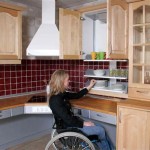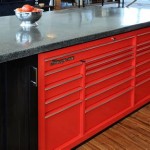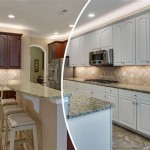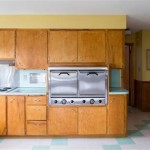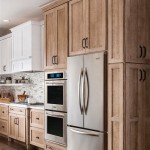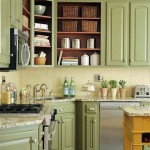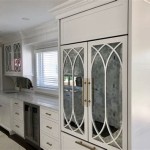Which Corner Is Best For Kitchen?
The kitchen is considered the heart of the home, and its layout plays a crucial role in its functionality and overall appeal. When planning a kitchen, selecting the optimal corner for the kitchen is a key decision that can significantly impact the space's efficiency and aesthetics. Several factors need to be taken into account when making this choice, including the size of the kitchen, the shape of the room, and the desired workflow of the occupants.
Shape and Size of the Kitchen
The size and shape of the kitchen will significantly influence the ideal corner for the kitchen. In a large, open kitchen, the corner placement is less critical, as there is ample space to accommodate different configurations. However, in smaller kitchens or those with irregular shapes, careful consideration is needed to maximize space utilization and create a functional layout.
For larger kitchens, the corner can be used to create a focal point, such as a central island or a breakfast nook. In smaller kitchens, the corner can be utilized for a compact dining area or a pantry to optimize storage space.
Workflow and Functionality
The kitchen's workflow should be a primary consideration when selecting the best corner. A well-planned workflow ensures that the kitchen is efficient and easy to use, reducing unnecessary movement and bottlenecks. The ideal corner for the kitchen should facilitate a smooth transition between different work zones, such as the sink, stove, and refrigerator.
The "work triangle" is a classic layout concept that outlines the optimal placement of the sink, stove, and refrigerator. The corner should be positioned in a way that minimizes the distance between these three essential elements, promoting efficiency and reducing steps.
Natural Light and Ventilation
Natural light can significantly enhance the ambiance and functionality of the kitchen. When selecting the corner for the kitchen, consider the natural light sources in the room. A corner that receives ample natural light can create a bright and inviting space. Windows and skylights can be strategically placed to maximize daylight and reduce the need for artificial lighting.
Ventilation is also an important aspect to consider, especially if the kitchen is prone to cooking odors or steam. A corner near a window or an exterior wall can provide natural ventilation and help keep the air fresh.
Additional Considerations
In addition to the factors mentioned above, there are several other considerations that may affect the choice of the best corner for the kitchen:
- Corner sinks: Corner sinks can be a space-saving solution, but they may have some ergonomic drawbacks. They can be more difficult to reach compared to sinks located on a straight run of cabinets.
- Corner appliances: Some appliances, such as microwaves or ovens, can be placed in the corner to save space. However, it is important to ensure that they are easily accessible and do not obstruct the workflow.
- Storage solutions: Corners can be effectively utilized for storage purposes. Corner cabinets with specialized shelving or pull-out drawers can provide valuable storage space.
Ultimately, the best corner for the kitchen will vary depending on the specific requirements and preferences of the homeowner. By carefully considering the factors discussed above, it is possible to create a kitchen that is both functional and visually appealing.

Vastu For Kitchen 6 Tips To Boost Positive Energy Architectural Digest

Kitchen Vastu Useful Tips To Maintain Good For

The Best Corner Cabinets For A Kitchen Remodel

6 Best Kitchen Corner Cabinet Ideas Majestic Cabinets
11 Corner Kitchen Cabinet Ideas For Storage Solution

6 Of The Best Solutions For Kitchen Corner Units Fitzgerald Kitchens

What To Do With The Corner Cabinet Kitchen Design

Design Ideas For The Awkward Kitchen Corner Calgary

Fabulous S To Utilize The Space Of Corner Kitchen Cabinets Custom Remodel Cabinet Best

Kitchen Corner Decorating Ideas Tips Space Saving Solutions
Related Posts

